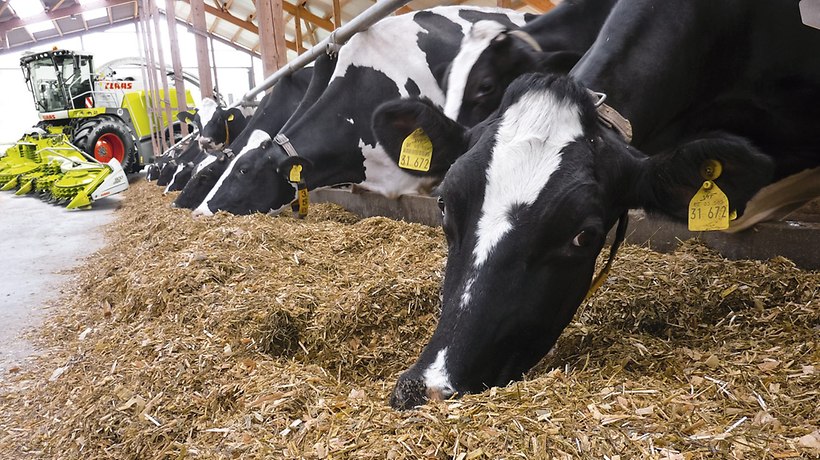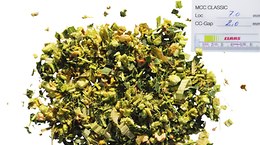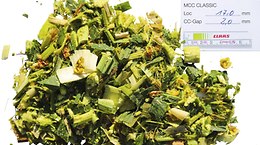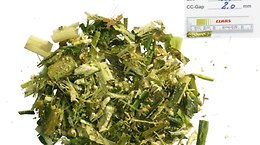

What are Your Needs?
Overview.
The requirements for silage chop length and processing differ widely depending on the individual farm and usage. The spectrum extends from short chop lengths all the way up to SHREDLAGE® with chop lengths greater than 21 mm. Broadly speaking, it is currently possible to identify three different processing styles.
#1: Short-Chopped Silage.
Chop lengths of 3.5 to 12 mm fall into the short-chopped silage group. Short chopping is used both for silage destined for biogas facilities as well as for dairy and beef cattle feed. The requirement here is for homogeneous, short and extremely fine plant material. A very high standard of kernel splitting is also called for. This silage, when used as cattle feed, is often complemented with sufficient quantities of alternative fiber material.
#2: Classic-Chopped Silage.
Classic-chopped silage covers the chop length range from 12 to 22 mm and has been the established "standard" in many areas for years. In addition to the splitting of the kernels, the need here is for improved physical effectiveness; however, the different feed components are not shredded as intensively as they are in the SHREDLAGE® process. Nevertheless, long-chopped silage also has greater physically effect fiber which promotes rumination; however, reduced packing density of the silage pile has traditionally been one of its shortcomings.
#3: SHREDLAGE®.
SHREDLAGE® is a new feed conditioning process invented by North American dairy nutritionists and proven by numerous university studies which calls for extremely long chop lengths of up to 30 mm. Thanks to the very high degree of kernel splitting, which can attain the intensity of a powerful grinding effect, the proportion of starch – a source of energy – available in the rumen is increased. Furthermore, the plant stalks undergo highly intensive longitudinal processing, the aim being to produce silage with significantly greater physical effectiveness and thereby to improve rumination. The highly processed, long-cut silage has the added benefit of superior packing density -- a limitation of standard long-cut silage.



















